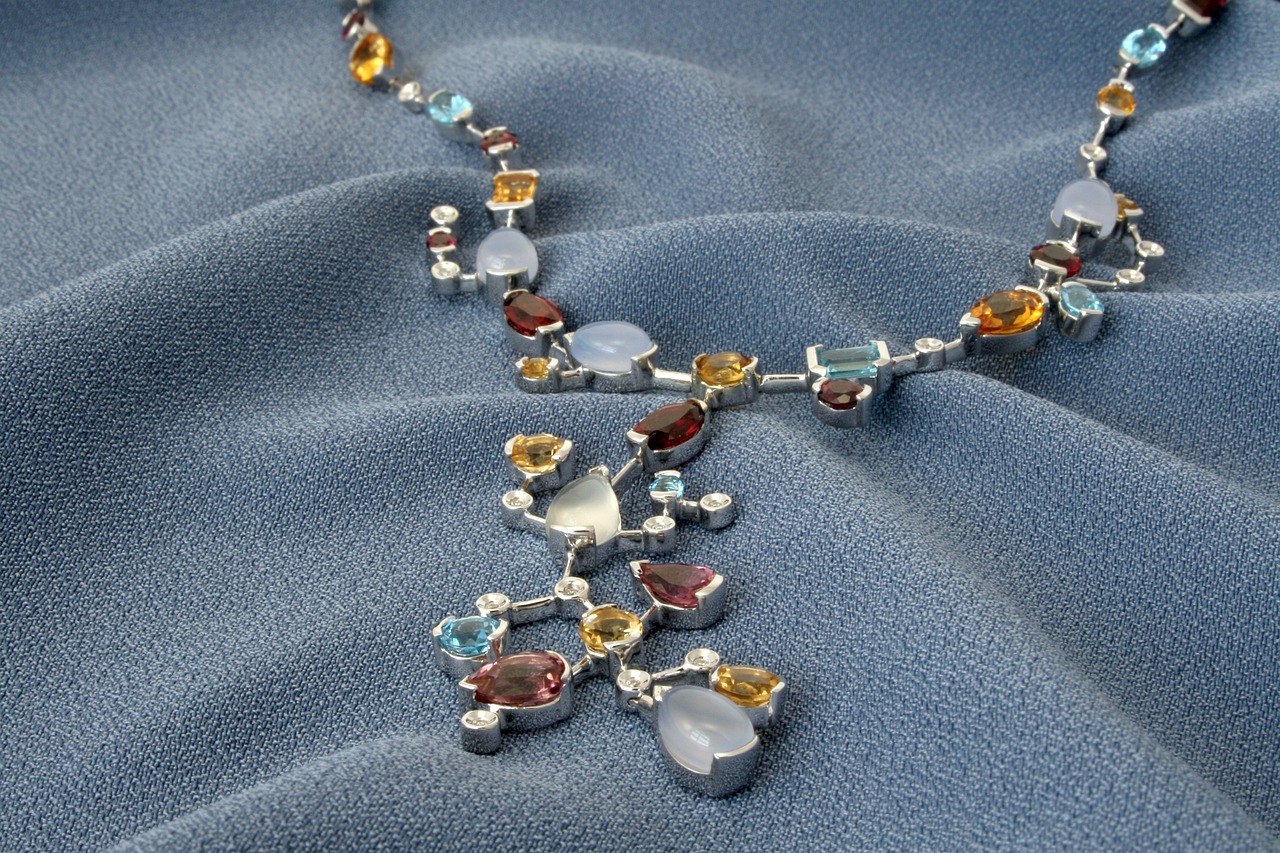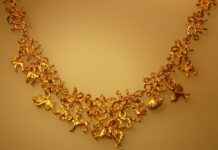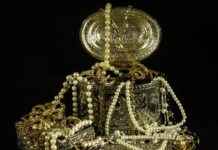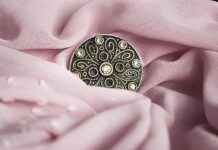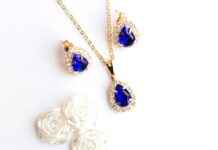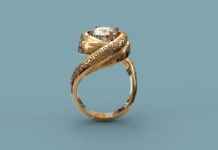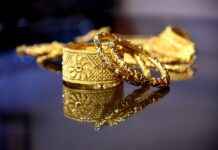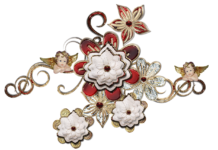This article delves into the elite world of luxury jewelry brands, showcasing their exceptional craftsmanship, iconic designs, and the myriad factors that contribute to their high prices.
1. Introduction to Luxury Jewelry
Luxury jewelry transcends mere adornment; it embodies status, artistry, and heritage. These exquisite pieces are often passed down through generations, symbolizing not just wealth but also deep emotional connections. The allure of high-end jewelry brands lies in their ability to blend traditional techniques with modern innovation, creating timeless pieces that captivate collectors and enthusiasts alike.
2. The Factors Behind High Jewelry Prices
Understanding the elements that drive the cost of luxury jewelry is crucial. Several key factors contribute to these high prices:
- Rare Materials and Gemstones: The scarcity of materials such as diamonds, emeralds, and precious metals significantly affects their market value. These elements are not only beautiful but also rare, enhancing their desirability.
- Craftsmanship and Design Innovation: The meticulous artistry involved in creating luxury jewelry sets these brands apart. Skilled artisans pour their expertise into every piece, ensuring that each item is unique and of the highest quality.
- Brand Reputation: Established brands carry a legacy that adds intrinsic value to their jewelry. Consumers are often willing to pay a premium for the assurance of quality and prestige that comes with a renowned name.
3. Iconic Jewelry Brands to Know
Several prestigious jewelry brands have made their mark globally, known for their exquisite designs and rich histories:
- Cartier: Known for its luxurious pieces, Cartier has a storied history that reflects its status as a leader in the jewelry world.
- Tiffany & Co.: Famous for its classic designs and the iconic blue box, Tiffany & Co. has become synonymous with elegance and romance.
4. The Rise of Contemporary Luxury Brands
In recent years, new luxury jewelry brands have emerged, challenging traditional giants. These contemporary designers are reshaping the market with innovative approaches:
- Innovative Design Trends: Many new brands embrace bold designs, appealing to a younger demographic seeking unique and personalized pieces.
- Sustainability in Luxury Jewelry: Eco-friendly practices are becoming increasingly important, with brands prioritizing ethical sourcing and sustainable production methods.
5. Conclusion: The Future of Luxury Jewelry
The luxury jewelry market is continuously evolving, influenced by changing consumer preferences and market dynamics. As sustainability and innovation take center stage, the future of luxury jewelry promises to be as dazzling as the pieces themselves.

1. Introduction to Luxury Jewelry
Luxury jewelry is not merely a form of adornment; it transcends the boundaries of fashion to embody status, artistry, and heritage. The allure of high-end jewelry brands lies in their ability to create pieces that are not only visually stunning but also rich in history and cultural significance. These brands often serve as a testament to the craftsmanship and creativity of skilled artisans who pour their heart and soul into each piece.
When we think of luxury jewelry, we often envision intricate designs and the finest materials. However, the significance of these pieces goes beyond their aesthetic appeal. They are often seen as a symbol of wealth and social standing, making them coveted items for many. Additionally, luxury jewelry can carry sentimental value, often passed down through generations as family heirlooms, thus connecting the past with the present.
High-end jewelry brands are renowned for their exceptional craftsmanship and innovative designs. Each piece tells a story, whether it’s the inspiration behind the design or the meticulous process involved in its creation. This section delves deeper into the world of luxury jewelry, exploring the factors that contribute to its desirability and the unique characteristics that set these brands apart.
In conclusion, luxury jewelry is a fascinating intersection of art, culture, and commerce. Its significance extends beyond mere decoration, offering insights into societal values and personal identity. As we explore the realm of luxury jewelry, we uncover the stories and artistry that make these pieces truly exceptional.
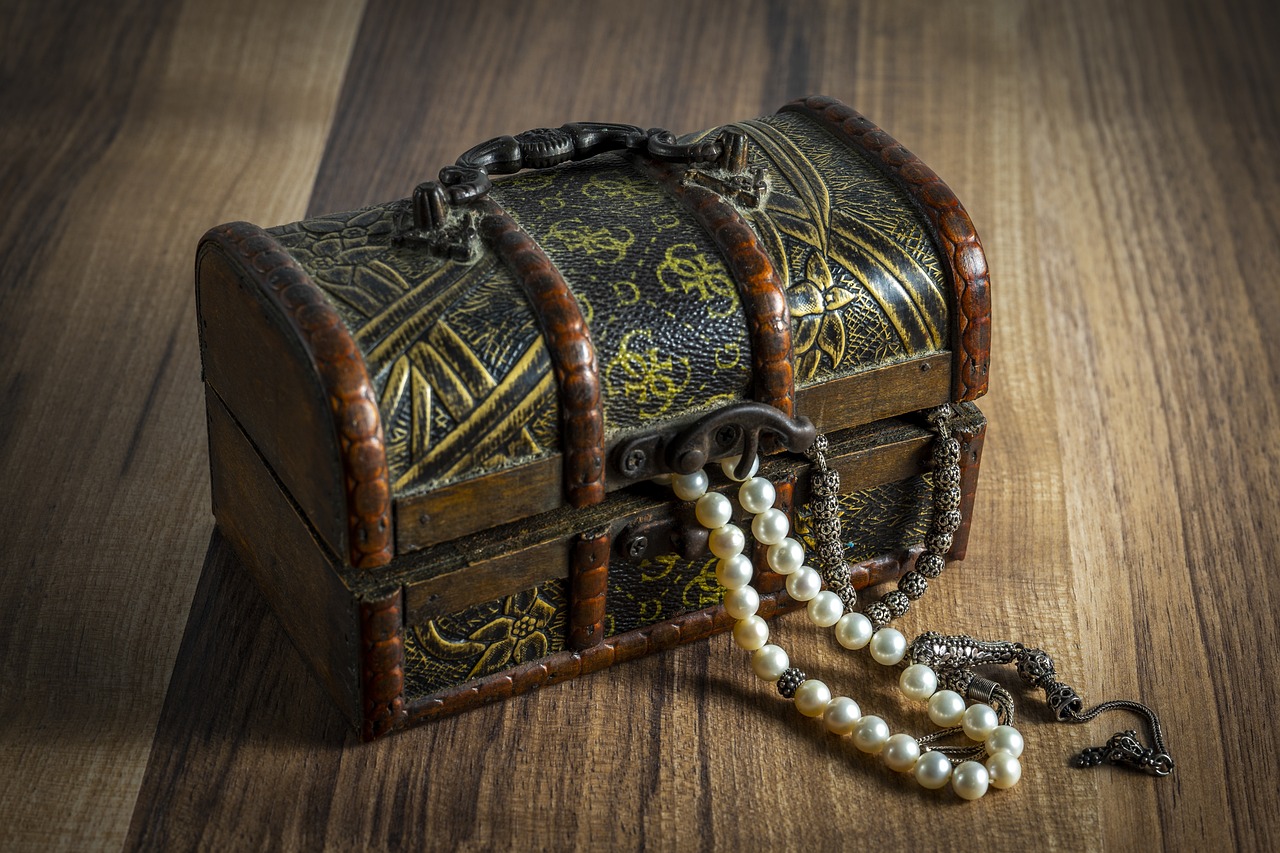
2. The Factors Behind High Jewelry Prices
Understanding the factors that contribute to the high prices of luxury jewelry is crucial for consumers and enthusiasts alike. The world of luxury jewelry is not just about aesthetic appeal; it encompasses a variety of elements that collectively enhance the value of each piece. This section delves into the primary drivers of luxury jewelry pricing, focusing on materials, craftsmanship, and brand reputation.
- Materials: The materials used in luxury jewelry significantly impact its price. Precious metals like gold, platinum, and silver are foundational, but the inclusion of rare gemstones such as diamonds, sapphires, and emeralds can elevate the value even further. The rarity and quality of these stones, along with their carat weight, color, clarity, and cut, play a pivotal role in determining overall cost.
- Craftsmanship: Exceptional craftsmanship is a hallmark of luxury jewelry. Skilled artisans invest countless hours in designing and creating each piece, ensuring that it meets the highest standards of quality. The intricacies involved in the crafting process, from hand-setting stones to intricate engraving, contribute significantly to the final price. The more complex and labor-intensive the design, the higher the cost.
- Brand Reputation: The reputation of a brand also influences pricing. Established luxury brands like Cartier and Tiffany & Co. are known for their heritage and prestige. Consumers are often willing to pay a premium for a piece that comes with a recognized name, as it symbolizes status and exclusivity. Moreover, brands that engage in ethical sourcing and sustainability practices may command higher prices due to their commitment to responsible luxury.
In conclusion, the interplay of materials, craftsmanship, and brand reputation creates a complex pricing structure in the luxury jewelry market. Understanding these factors not only helps consumers make informed purchasing decisions but also deepens appreciation for the artistry behind each exquisite piece.
2.1. Rare Materials and Gemstones
The world of luxury jewelry is profoundly influenced by the rarity and uniqueness of materials such as diamonds, emeralds, and gold. Each of these elements plays a critical role in determining the overall value and desirability of a piece. This section delves into how these precious materials contribute to the high prices associated with luxury jewelry.
Firstly, the rarity of gemstones significantly affects their market value. For instance, diamonds are not only prized for their beauty but also for their scarcity. The grading of diamonds, which considers factors like cut, clarity, color, and carat weight, influences their price. The most sought-after diamonds, such as pink and blue diamonds, are incredibly rare, leading to astronomical prices that can reach millions of dollars.
Emeralds, known for their rich green hue, are another example of a rare gemstone that elevates jewelry prices. The finest emeralds are often found in limited quantities in specific regions, such as Colombia. Their vivid color and transparency make them highly desirable, and the demand often exceeds supply, further driving up their value.
Gold, as a foundational material in jewelry making, also plays a crucial role in pricing. Its purity is measured in karats, with 24-karat gold being the purest form. The fluctuating market prices of gold can significantly impact the cost of jewelry, especially when combined with intricate designs and craftsmanship.
In addition to rarity, the perceived value of these materials is enhanced by their historical significance and cultural associations. For example, diamonds have long been linked to love and commitment, making them a popular choice for engagement rings, while emeralds are often seen as symbols of rebirth and fertility.
In conclusion, the interplay between rarity, market demand, and cultural significance ensures that materials like diamonds, emeralds, and gold remain at the forefront of luxury jewelry pricing. Understanding these factors helps consumers appreciate the true value of their exquisite pieces.
2.1.1. The Role of Certification
Certification from reputable organizations plays a crucial role in the luxury jewelry market, particularly when it comes to gemstones. In an industry where authenticity and quality are paramount, certifications serve as a guarantee of a gemstone’s value and origin. This section explores the significance of certifications and how they enhance the credibility of luxury jewelry brands.
Firstly, certifications provide assurance to consumers that the gemstones they are purchasing are genuine and ethically sourced. Organizations such as the Gemological Institute of America (GIA) and the International Gemological Institute (IGI) are renowned for their rigorous evaluation processes. They assess various factors, including color, clarity, cut, and carat weight, ensuring that consumers receive accurate information about their purchases.
Moreover, certifications can significantly impact the resale value of jewelry. When a piece is accompanied by a reputable certification, it not only enhances its marketability but also instills confidence in potential buyers. A certified gemstone often commands a higher price on the secondary market, as it assures buyers of its quality and legitimacy.
In addition to increasing consumer trust, certifications also promote transparency within the industry. With the rise of ethical sourcing practices, many brands are now prioritizing the traceability of their gemstones. Certifications can verify that stones are sourced from conflict-free zones, aligning with the growing demand for ethical luxury. This commitment to responsible sourcing not only appeals to socially conscious consumers but also strengthens brand reputation.
In conclusion, the role of certification in the luxury jewelry market cannot be overstated. It serves as a vital tool for ensuring authenticity, enhancing resale value, and promoting ethical practices. As consumers become more informed and discerning, the importance of certifications will continue to grow, shaping the future of the luxury jewelry industry.
2.1.2. Ethical Sourcing Practices
Ethical sourcing practices have emerged as a crucial element in the luxury jewelry industry, influencing both pricing and consumer perception. As consumers become increasingly aware of the impact of their purchases, brands that prioritize ethical practices are gaining a competitive edge.
In recent years, there has been a significant shift in consumer expectations. Shoppers are not only looking for exquisite designs but also for assurance that the materials used in their jewelry are sourced responsibly. This growing demand for transparency has led many luxury brands to adopt ethical sourcing strategies.
- Transparency in Supply Chains: Brands are now expected to disclose the origins of their materials. This transparency helps build trust and loyalty among consumers.
- Fair Trade Practices: Ethical sourcing often involves ensuring that miners and artisans receive fair wages and work in safe conditions. This commitment to social responsibility resonates with consumers who value ethical consumption.
- Environmental Sustainability: Many luxury brands are also focusing on eco-friendly practices, such as using recycled materials and minimizing their environmental footprint. This approach appeals to the growing segment of environmentally conscious consumers.
Moreover, brands that emphasize ethical sourcing can command higher prices. Consumers are often willing to pay a premium for jewelry that aligns with their values. This premium pricing reflects not only the quality of the craftsmanship but also the ethical narrative behind the product.
In conclusion, ethical sourcing is not just a trend; it is becoming a fundamental aspect of the luxury jewelry market. Brands that prioritize these practices not only enhance their reputation but also influence consumer purchasing decisions, ultimately shaping the future of the industry.
2.2. Craftsmanship and Design Innovation
In the realm of luxury jewelry, craftsmanship and design innovation are the cornerstones that elevate a piece from mere ornamentation to a work of art. The meticulous attention to detail and the unique vision of skilled artisans are what truly set high-end jewelry apart from mass-produced alternatives.
At the heart of luxury jewelry lies the expertise of artisans. These highly trained professionals possess years of experience, often passed down through generations. Their ability to manipulate precious metals and gemstones into stunning creations reflects not only their technical skill but also their artistic sensibility. Each piece is a testament to their dedication and passion, ensuring that every item is unique and of the highest quality.
Moreover, the design process itself is a blend of tradition and innovation. Many luxury brands collaborate with renowned designers who infuse modern aesthetics with classic techniques. This fusion results in pieces that are not only timeless but also resonate with contemporary trends. For instance, the use of unconventional materials or innovative settings can transform a traditional design into something groundbreaking.
Luxury brands often showcase their commitment to craftsmanship through limited editions and bespoke pieces. These offerings allow clients to customize their jewelry, making it a personal expression of style and identity. Such exclusivity adds to the allure and value of high-end jewelry, as each piece tells a unique story.
In conclusion, the exceptional craftsmanship and innovative designs found in luxury jewelry are not merely about aesthetics; they reflect a deep-rooted heritage of skill and creativity. As consumers increasingly seek authenticity and individuality, the role of artisans in crafting unique pieces becomes even more significant, ensuring that luxury jewelry remains a cherished symbol of elegance and status.
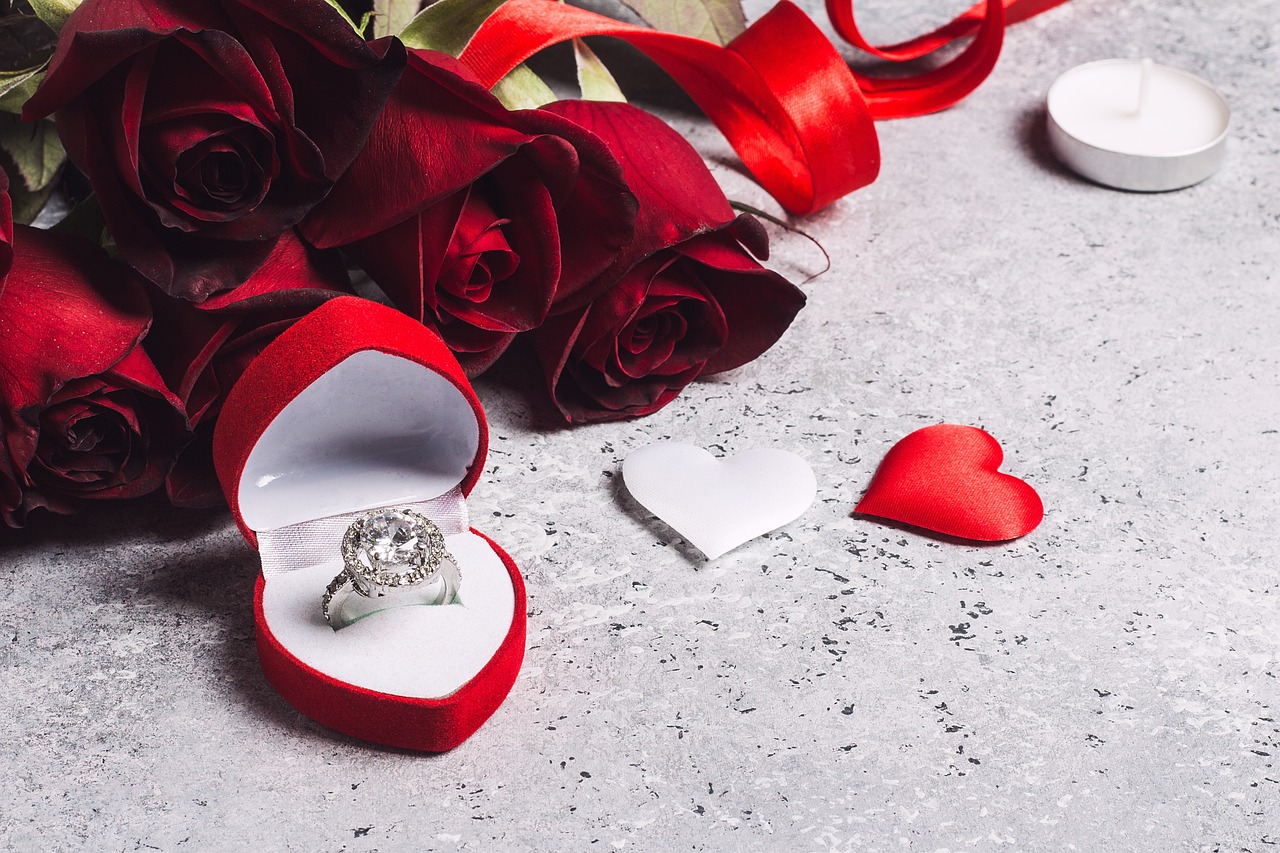
3. Iconic Jewelry Brands to Know
In the realm of luxury jewelry, certain brands stand out due to their exquisite craftsmanship, timeless designs, and rich histories. These brands not only create stunning pieces but also embody the essence of elegance and prestige. Below, we explore some of the most prestigious jewelry brands globally, each renowned for their unique contributions to the world of luxury adornments.
- Cartier: Established in 1847, Cartier is often referred to as the “jeweler of kings.” Known for its intricate designs and exceptional quality, Cartier has produced iconic pieces such as the Cartier Love Bracelet and the Panthère de Cartier collection. The brand’s commitment to artistry and innovation has solidified its status as a leader in the luxury jewelry market.
- Tiffany & Co.: Founded in 1837, Tiffany & Co. is synonymous with luxury and romance. The brand is famous for its signature blue box and has a rich history of creating stunning engagement rings and fine jewelry. Tiffany’s dedication to craftsmanship and quality has made it a beloved name in the jewelry industry.
- Van Cleef & Arpels: Renowned for its unique designs and the use of the mystery setting, Van Cleef & Arpels has a legacy dating back to 1906. The brand is celebrated for its whimsical motifs and exceptional gemstones, making it a favorite among collectors and connoisseurs alike.
- Bulgari: Founded in 1884, Bulgari is known for its bold, colorful designs that reflect Italian craftsmanship. The brand’s signature pieces often feature vibrant gemstones and intricate details, making them highly sought after by luxury jewelry enthusiasts.
- Chopard: Established in 1860, Chopard is recognized for its luxurious watches and fine jewelry. The brand’s commitment to sustainable luxury and ethical sourcing has enhanced its appeal in the modern market, while its iconic Happy Diamonds collection remains a timeless favorite.
These brands not only represent luxury but also tell stories of heritage, artistry, and innovation. Each piece they create is a testament to their dedication to excellence, making them essential names in the world of high-end jewelry.
3.1. Cartier: A Legacy of Luxury
Cartier is a name that resonates with luxury and elegance, representing a legacy that spans over a century. Founded in 1847 by Louis-François Cartier in Paris, the brand has become a symbol of opulence and sophistication. This section delves into the rich history of Cartier and highlights the iconic pieces that have solidified its status as a leader in the luxury jewelry market.
From its inception, Cartier distinguished itself through exceptional craftsmanship and innovative designs. The brand’s commitment to quality is evident in its use of the finest materials, including rare gemstones and precious metals. Cartier’s ability to blend traditional techniques with modern aesthetics has resulted in timeless pieces that are highly sought after by collectors and connoisseurs alike.
One of the brand’s most iconic creations is the Cartier Love Bracelet, introduced in the 1970s. This piece not only symbolizes love and commitment but also showcases Cartier’s innovative approach to jewelry design. The bracelet features a unique locking mechanism, requiring a special screwdriver for removal, which adds to its allure.
Another hallmark of Cartier’s legacy is the Panthère de Cartier collection. The panther motif, which first appeared in the early 20th century, has become synonymous with the brand. These pieces, often adorned with diamonds and colored gemstones, embody a sense of daring and femininity, appealing to a wide range of clientele.
Throughout its history, Cartier has also been the choice of royalty and celebrities, further enhancing its prestige. The brand’s creations have adorned the likes of Princess Grace of Monaco and Elizabeth Taylor, solidifying its reputation as a purveyor of luxury.
In conclusion, Cartier’s legacy is defined by its commitment to excellence, innovation, and timeless elegance. The brand continues to influence the world of luxury jewelry, making it a pivotal player in the industry.
3.2. Tiffany & Co.: Timeless Elegance
Tiffany & Co. has become a symbol of luxury and timeless elegance in the world of jewelry. Founded in 1837, this iconic brand has not only revolutionized the jewelry industry but has also made a significant mark on popular culture. The brand is best known for its classic designs, exceptional craftsmanship, and, of course, its signature blue box, which has become a symbol of sophistication and prestige.
The impact of Tiffany & Co. on the jewelry industry is profound. The brand pioneered the concept of branding in luxury goods, transforming the way consumers perceive and value jewelry. Tiffany’s commitment to quality and innovation has set a benchmark for other luxury brands. Their designs, such as the Tiffany Setting engagement ring, have become a standard in the industry, symbolizing love and commitment.
Moreover, Tiffany & Co. has played a pivotal role in shaping popular culture. The brand’s association with Hollywood, particularly through films like Breakfast at Tiffany’s, has cemented its status as a cultural icon. The imagery of Audrey Hepburn adorned in Tiffany jewelry has become synonymous with glamour and aspiration, influencing generations of consumers.
In addition to its cultural significance, Tiffany & Co. has embraced sustainability and ethical sourcing in recent years, responding to the growing demand for responsible luxury. This shift not only reflects the brand’s commitment to social responsibility but also enhances its appeal among a more conscious consumer base.
In conclusion, Tiffany & Co. is not just a jewelry brand; it is a cultural phenomenon that has influenced both the jewelry industry and popular culture. Its legacy of timeless elegance and commitment to quality continues to resonate with consumers around the world, ensuring its place as a leader in the luxury market.
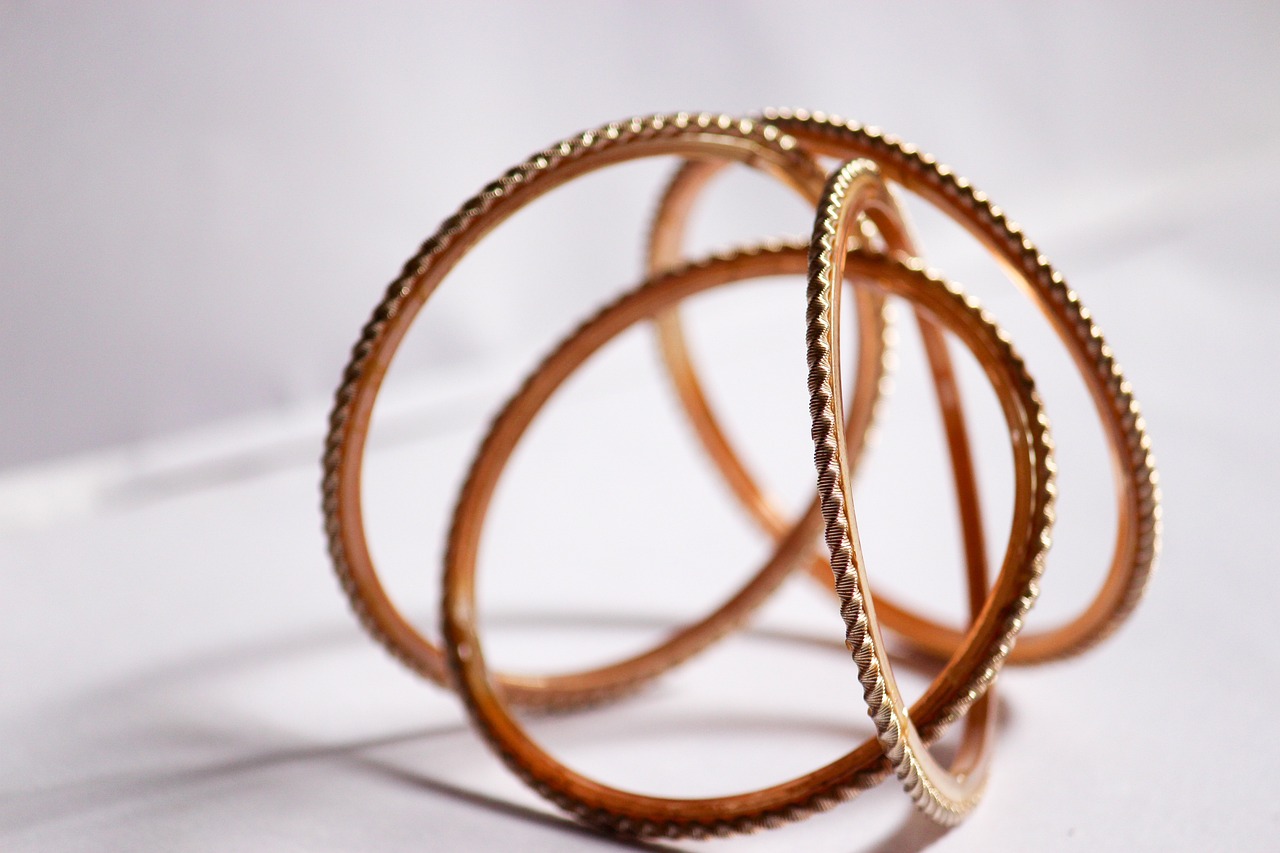
4. The Rise of Contemporary Luxury Brands
The Rise of Contemporary Luxury Brands
In the ever-evolving landscape of luxury jewelry, a new wave of brands has emerged, redefining the standards of elegance and exclusivity. These contemporary designers are not just creating jewelry; they are crafting experiences that resonate with a modern audience, blending tradition with innovation.
One of the most significant shifts in the luxury market is the emphasis on personalization. Today’s consumers are seeking unique pieces that reflect their individual style and values. This desire has led brands to offer customizable options, allowing clients to participate in the design process. As a result, jewelry is becoming a more personal statement rather than just a status symbol.
Moreover, contemporary brands are embracing sustainability as a core value. With increasing awareness of environmental issues, many new luxury jewelry brands prioritize ethical sourcing and eco-friendly materials. This commitment not only appeals to eco-conscious consumers but also sets them apart in a crowded market. Brands like Brilliant Earth are leading the charge, ensuring that their gemstones are sourced responsibly and that their practices support fair labor.
In addition to sustainability, contemporary designers are pushing the boundaries of design innovation. They are experimenting with unconventional materials and bold aesthetics, often drawing inspiration from art, architecture, and nature. This has resulted in striking collections that challenge traditional notions of luxury. For instance, brands like Alighieri and Jade Trau are known for their artistic approach, creating pieces that tell a story and evoke emotion.
Furthermore, social media plays a crucial role in the rise of these new brands. Platforms like Instagram allow designers to showcase their work directly to consumers, bypassing traditional marketing channels. This direct engagement fosters a sense of community and connection, making consumers feel more invested in the brands they choose to support.
In conclusion, the rise of contemporary luxury jewelry brands signifies a shift towards more personalized, sustainable, and innovative offerings. As these brands continue to challenge traditional giants, they are reshaping the luxury market, appealing to a new generation of consumers who value authenticity and craftsmanship.
4.1. Innovative Design Trends
Innovative Design Trends in the luxury jewelry sector are reshaping consumer preferences and creating new standards for elegance and sophistication. Contemporary brands are not just following trends; they are setting them by embracing bold and innovative designs that resonate with today’s luxury consumers.
One of the most notable trends is the use of asymmetrical designs. Unlike traditional symmetrical pieces, these designs challenge conventional aesthetics, offering a unique and artistic flair. This approach allows designers to express individuality and creativity, appealing to consumers who seek distinctive and personal jewelry.
Another significant trend is the incorporation of mixed materials. Luxury brands are increasingly blending metals, gemstones, and unconventional materials like resin or wood, creating pieces that are not only visually stunning but also tell a story. This fusion of materials enhances the uniqueness of each piece, making them highly sought after by collectors and fashion enthusiasts alike.
Furthermore, the use of colorful gemstones is gaining traction. While diamonds have long been the standard in luxury jewelry, contemporary brands are now showcasing vibrant sapphires, emeralds, and rubies in unexpected settings. This trend reflects a shift towards self-expression and personalization, allowing consumers to choose pieces that resonate with their individual style.
Moreover, customization is becoming a hallmark of contemporary luxury jewelry. Brands are offering bespoke services that enable consumers to create personalized pieces that reflect their tastes and preferences. This level of customization not only enhances the emotional value of the jewelry but also makes the buying experience more engaging and meaningful.
In summary, the innovative design trends in contemporary luxury jewelry are characterized by asymmetry, mixed materials, colorful gemstones, and customization. These elements not only cater to the evolving tastes of luxury consumers but also redefine the very essence of luxury jewelry, making it more accessible and relatable.
4.2. Sustainability in Luxury Jewelry
Sustainability in Luxury Jewelry
In recent years, the concept of sustainability has gained significant traction within the luxury jewelry industry. As consumers become more environmentally conscious, brands are increasingly adopting eco-friendly practices to align with these values. This shift not only influences brand strategies but also shapes consumer choices in profound ways.
Luxury jewelry brands are now recognizing that ethical sourcing and sustainability can enhance their market appeal. For instance, many brands are committed to sourcing materials such as diamonds and gold from conflict-free zones, ensuring that their products do not contribute to human suffering or environmental degradation. This commitment is often highlighted through transparent supply chains and partnerships with organizations that promote ethical mining practices.
Moreover, the rise of lab-grown gemstones has revolutionized the industry. These stones offer a sustainable alternative to mined gems, reducing the environmental impact associated with traditional mining. Brands that incorporate lab-grown options into their collections not only cater to eco-conscious consumers but also position themselves as innovators within the market.
Additionally, many luxury brands are embracing recycled materials in their designs. By using recycled gold and silver, they minimize waste and reduce the demand for newly mined resources. This practice not only appeals to environmentally aware consumers but also enhances the brand’s image as a responsible player in the luxury sector.
As sustainability becomes a cornerstone of brand identity, companies are also focusing on packaging innovations. Eco-friendly packaging solutions, such as biodegradable materials and minimalistic designs, reflect a brand’s commitment to reducing its carbon footprint. This shift resonates with consumers who prioritize sustainability in their purchasing decisions.
In conclusion, the influence of sustainability on luxury jewelry brands is undeniable. By adopting eco-friendly practices and promoting ethical sourcing, these brands are not only enhancing their appeal but also contributing to a more sustainable future. As consumer awareness continues to grow, the demand for sustainable luxury jewelry is expected to rise, shaping the industry’s landscape for years to come.

5. Conclusion: The Future of Luxury Jewelry
The luxury jewelry market is on a dynamic trajectory, continually adapting to the shifting preferences of consumers and the influence of market trends. As we look ahead, several key insights emerge that shape our understanding of this opulent industry.
Consumer Preferences are evolving, with a growing emphasis on personalized and unique pieces. Today’s consumers seek jewelry that tells a story or reflects their individuality, leading brands to innovate and offer bespoke options. This shift towards customization is not just a trend; it signifies a deeper desire for connection and authenticity in luxury purchases.
Moreover, the impact of technology cannot be overstated. Digital platforms are transforming how consumers discover and purchase luxury jewelry. Social media, in particular, plays a pivotal role in influencing buying decisions, allowing brands to showcase their artistry and engage with a broader audience. As e-commerce continues to flourish, traditional retail models may need to adapt to maintain relevance.
Another significant factor is the increasing awareness of sustainability in the luxury sector. Consumers are becoming more conscientious about the origins of their jewelry, prompting brands to adopt ethical sourcing practices and transparent supply chains. This trend not only enhances brand loyalty but also positions sustainability as a key differentiator in a crowded market.
Looking forward, the luxury jewelry market is likely to witness further innovation in design and materials. Emerging technologies, such as 3D printing and lab-grown gemstones, may revolutionize production processes and redefine notions of luxury. These advancements will challenge traditional perceptions while offering consumers more choices.
In conclusion, the future of luxury jewelry is poised for transformation. By embracing consumer preferences, leveraging technology, and prioritizing sustainability, brands can navigate the complexities of the market and continue to thrive in this ever-evolving landscape.
Frequently Asked Questions
- What makes luxury jewelry so expensive?
Luxury jewelry is priced high due to a combination of factors, including the use of rare materials like diamonds and gold, exceptional craftsmanship, and the brand’s reputation. Each piece often represents a significant investment in artistry and heritage.
- How do I know if a gemstone is authentic?
Authenticity can be verified through certification from reputable organizations. Certificates provide assurance of the gemstone’s quality and origin, which can greatly influence its value in the luxury market.
- Are contemporary luxury brands as valuable as traditional ones?
Absolutely! Contemporary luxury brands are redefining value by embracing innovative designs and sustainable practices. They often attract a younger audience and are gaining recognition for their unique contributions to the luxury jewelry landscape.
- What role does sustainability play in luxury jewelry today?
Sustainability is becoming a crucial aspect of luxury jewelry, as more brands prioritize eco-friendly sourcing and production methods. This shift not only appeals to environmentally conscious consumers but also enhances brand reputation in a competitive market.
- Why is Cartier considered a legacy brand?
Cartier is renowned for its rich history and iconic pieces that have defined luxury jewelry for generations. The brand’s commitment to craftsmanship and elegance has solidified its status as a timeless symbol of luxury.

